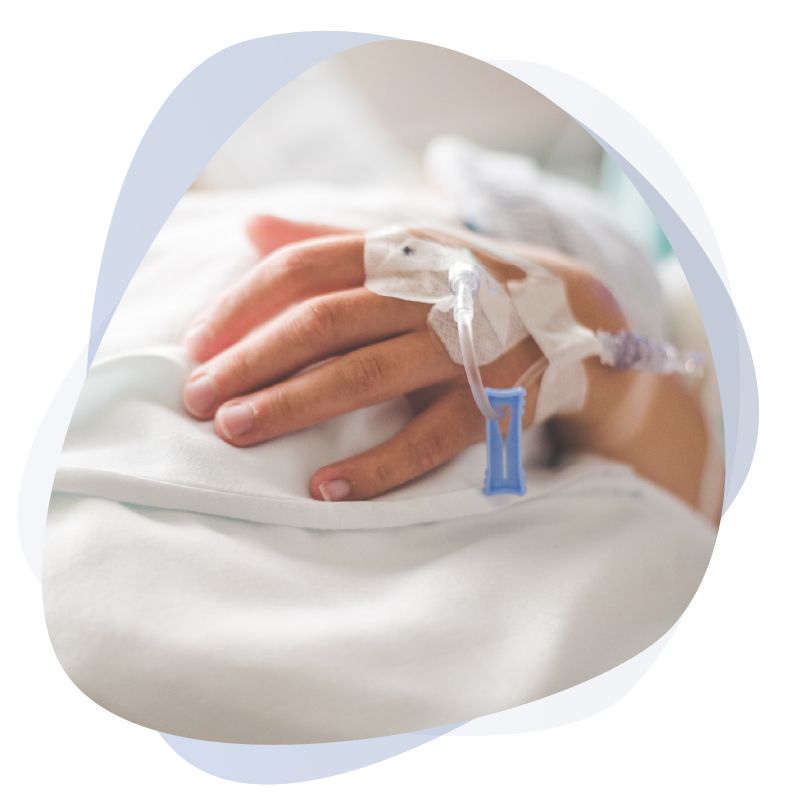IV Therapy & Blood Withdrawal for LVN
October 30, 2021 2023-11-30 22:13Approved by California Board of Vocational Nursing and
Psychiatric Technicians
Approved Course Number: IB15113
IV Therapy & Blood Withdrawal
Course Number VN 550: This is a hybrid format 36-hour course consisting of 27 hours of lecture and nine (9) hours of clinical experience. The course is designed to safely enable the Licensed Vocational Nurse to initiate and maintain intravenous therapy in the clinical setting.
Methods of Instruction
- Didactic Instruction Classroom: Videos,Powerpoint Presentations, Case Study Discussions, Course worksheets, Quizzes.
- Clinical Instruction: Classroom lab with skills demonstration & equipment. Each student must complete a minimum of three individually supervised successful venipunctures and three individually supervised skin punctures (capillary blood withdrawal) on live human subjects. The standard completion time for this course is one week, excluding any holidays and vacation times.
Course Details
Upon completion of the course, the student will be able to:
- Discuss the structure and function of veins.
- Identify the names and the locations of the veins most suitable for phlebotomy and cannulation/venipuncture.
- Assemble equipment and supplies needed to collect blood and cannulation/venipuncture and discuss the correct use.
- Demonstrate the steps in performing blood collection and cannulation/venipuncture procedures.
- Assess the techniques and equipment used to minimize biohazard exposure in blood collection and cannulation/venipuncture.
- Evaluate procedural errors in blood collection and cannulation/venipuncture and discuss remedies for each.
- Differentiate complications associated with blood collection and cannulation/venipuncture and their effect on the quality of laboratory results.
IV Therapy and Blood Withdrawal Course Goals and Objectives
Objectives:
- Recognize the role of the Registered Nurse and the Licensed Vocational Nurse in IV Therapy and Blood Withdrawal.
- List factors that affect flow rates of IV solutions.
- Describe the proper use of specific IV therapy, arterial puncture, and blood withdrawal equipment.
- Initiate IV therapy, blood withdrawal, arterial puncture utilizing nursing precautions or patient safety.
Objectives:
- Preparing the patient psychologically.
- Explaining the rationale for blood withdrawal, arterial punctures, and venipunctures.
- Differentiating between the types of skin puncture, venipunctures, and arterial devices and their appropriate uses.
- Differentiating between skin puncture, arterial puncture, and venipunctures.
- Distinguishing between types of intravenous solutions and their appropriateness.
- Preparing equipment properly and aseptically.
- Selecting and correctly preparing the most appropriate vein for venipunctures, blood withdrawal, or arterial puncture.
- Preparing the site in a manner that reduces the chance of infection.
- Performing venipunctures utilizing the direct or indirect method.
- Performing blood withdrawal utilizing skin puncture (vacutainer, butterfly, syringe), arterial puncture, or venipunctures.
- Dressing site according to policy.
- Securing and immobilizing devices appropriately and safely.
- Regulating the flow rate and fluid accurately.
- Documenting on the medical records.
- Recognize complications related to blood withdrawal, arterial punctures, and venipunctures.
- Recognize local and systemic reactions related to intravenous therapy.
- List the nursing measures taken to reduce local and systemic reactions.
- List five reasons to discontinue and restart IV devices.
- List the cause and differentiate clinical symptoms of electrolyte imbalances.
- Identify the role of IV therapy and pH balance.
- List the causes of pH imbalances.
- Differentiate actions, dosages, side effects, and nursing implications of specified intravenous solutions.
- Correlate the IV fluid container label with the name of the solution as commonly ordered.
- List the usual components of Total Parenteral Nutrition (TPN).
- Identify nursing precautions relating to TPN.
- Recognize safety techniques utilized in blood transfusions.
- Recognize types of transfusion reactions.
- List nursing actions that are taken when a blood transfusion occurs.
- Examine the differences between techniques used in adult and pediatric IV therapy.
- Discuss situations related to IV therapy and legal implications.
- Describe appropriate ways of minimizing legal risks in IV therapy and blood withdrawal practice.
- Identify the safety precautions regarding administering IV fluids, withdrawing blood, and
testing adequate circulation about the arterial puncture site.
Optional Textbooks for This Course
Textbooks

Journal of Infusion Nursing: Infusion Nursing Standards of Practice, Revised 2016, Infusion Nurses Society.
● ASIN : B01N8UAMA5
● Publisher : Infusion Nurses Society; 5th edition (January 1, 2016)
● Language : English
● Paperback : 75 pages
● ISBN-10 : 0996594809
● ISBN-13 : 978-09965948

Lippincott Williams and Wilkins 2018 IV Therapy Made Incredibly Easy (5 th ed.), Philadelphia:
● ASIN : 1496355016
● Publisher : LWW; Fifth edition (December 12, 2017)
● Language : English
● Paperback : 392 pages
● ISBN-10 : 9781496355010
● ISBN-13 : 978-1496355010

Wolters Kluwer Castillo, S. L. & Werner-McCullough, M. (2012). Calculating Drug Dosages: An Interactive Approach to Learning Nursing Math (3rd ed.). Philadelphia: Davis.
● ASIN : 0803624972
● Publisher : F.A. Davis Company; 3rd edition (April 27, 2012)
● Language : English
● CD-ROM : 168 pages
● ISBN-13 : 978-0803624979

Gorski, L.A. (2018). Phillips’s Manual of I.V. Therapeutics: Evidence-Based Practice for Infusion Therapy (7th Ed.). Philadelphia: Davis.
● ASIN : 0803667043
● Publisher : F.A. Davis Company; Seventh edition (April 10, 2018)
● Language : English
● Paperback : 698 pages
● ISBN-10 : 9780803667044
● ISBN-13 : 978-0803667044

Deglin, J.H. & Vallerand, A.H. (Eds.) (2020). Davis’s Drug Guide for Nurses (17 th ed.). Philadelphia: Davis.
● Publisher : F.A. Davis Company; Seventeenth edition (May 21, 2020)
● Language : English
● Paperback : 1488 pages
● ISBN-10 : 171964005X
● ISBN-13 : 978-1719640053




